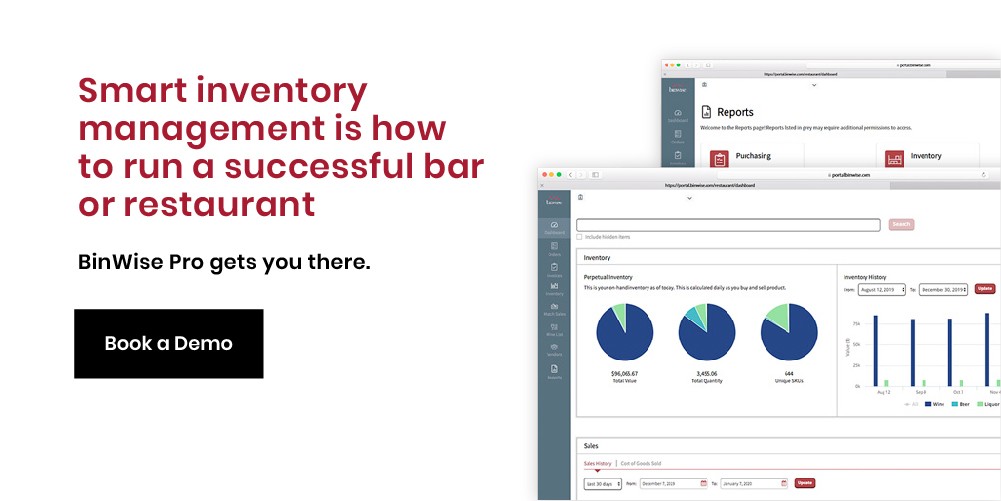What is a handle of alcohol and why does it matter in the world of mixology? At HOW.EDU.VN, we break down this essential measurement, along with related terminology, offering practical advice for everyone from novice bartenders to seasoned professionals. Discover how a clear understanding of alcohol volumes, such as handle sizes and liquor measurements, can elevate your bartending skills.
1. Understanding the Handle of Alcohol
A handle of alcohol is essentially a 1.75-liter bottle. The term is commonly used in the United States to refer to this specific size of liquor bottles, no matter the type of spirit, be it vodka, rum, whiskey, or gin. The name “handle” comes from the large size of the bottle, which often includes a handle for easier pouring. This size is popular for its value, reducing the frequency of restocking.
2. Common Terms for a 1.75 Liter Bottle
Several names are used for a 1.75-liter bottle of alcohol. Besides “handle,” you might hear it called a “half-gallon,” as it’s approximately half of a US gallon. Knowing these terms is crucial for accurate inventory management and order placement. Being familiar with these terms helps avoid confusion and ensures smooth bar operations.
- Handle
- Half-gallon
- 1.75 L bottle
3. Why This Measurement Matters
Understanding the volume of a handle is essential for accurate drink preparation and cost control. It allows bartenders to maintain consistency in cocktails, manage inventory efficiently, and price drinks appropriately. This knowledge is especially useful when adjusting recipes to serve large groups or for batch cocktails.
4. Ounces in a Handle: A Detailed Breakdown
A 1.75-liter bottle contains approximately 59.18 fluid ounces. This conversion is critical for bartenders who need to measure precise amounts for cocktails or when converting recipes. Knowing this conversion helps in standardizing drink recipes and ensuring consistent taste.
4.1 Converting Liters to Ounces
Understanding the conversion from liters to ounces is vital in a bar setting. This knowledge is important for modifying drink recipes, managing inventory, and ensuring that beverages are priced correctly to maintain profitability.
| Measurement | Equivalent Value |
|---|---|
| 1 Liter | 33.814 ounces |
| 1.75 Liters (Handle) | 59.18 ounces |



4.2 Practical Uses in Bartending
In bartending, you frequently need to convert a handle into smaller units like ounces for individual drinks. For example, if a recipe calls for 2 ounces of vodka, you can calculate how many servings you can make from a handle. This calculation aids in inventory tracking and cost management.
5. Pints in a Handle: Calculations and Conversions
A 1.75-liter handle contains approximately 3.7 US liquid pints. While pints are more commonly used for beer, knowing this conversion can be useful for large batch cocktails or when calculating the amount of alcohol needed for an event.
5.1 Pints vs. Imperial Pints
It is important to specify US liquid pints, as British Imperial measurements differ. In the UK, a pint is about 20% larger than a US pint, which can affect calculations. Always clarify the measurement system to avoid errors.
5.2 When to Use Pints in Mixed Drinks
Pints of spirits are rarely used in single mixed drinks due to the high alcohol content. However, pints can be helpful for communal mixed drinks or punch bowls, where you need to measure large volumes of liquid.
6. Shots in a Handle: Maximizing Your Bottle
A handle contains approximately 39 standard 1.5-ounce shots. This conversion is useful for inventory management and understanding the potential yield from each bottle. It also helps in calculating the cost per shot, which is important for pricing strategies.
6.1 Accounting for Shrinkage
It’s important to account for potential spillage or over-pouring, which can reduce the actual number of shots obtained from a handle. This is known as shrinkage. Experienced bartenders often adjust their calculations to account for this loss.
6.2 Proper Pouring Techniques
To maximize the number of shots from a handle, using a jigger and pour spout is recommended. These tools help to control the pour and minimize spillage. Regular practice with these tools can significantly improve accuracy and reduce waste.
7. Essential Tools for Accurate Measurement
Having the right tools is essential for accurate measurement in bartending. These include jiggers, pour spouts, measuring glasses, and calibrated bottles. Investing in quality tools ensures consistent pours and reduces waste.
7.1 Jiggers and Their Uses
A jigger is a double-ended measuring tool used to pour precise amounts of liquor. Common sizes are 1 ounce on one side and 2 ounces on the other. Jiggers come in various materials, including stainless steel and glass, each offering different levels of durability and visibility.
7.2 Pour Spouts and Free Pouring
Pour spouts are attached to liquor bottles to control the flow of liquid. While experienced bartenders can free pour accurately, using a pour spout helps maintain consistency and reduces spills. Regular maintenance of pour spouts ensures they don’t become clogged or leak.
8. Converting a Handle of Alcohol: Practical Examples
Understanding how to convert a handle into smaller units is essential for various bartending tasks. This includes adjusting recipes, calculating drink costs, and managing inventory effectively. Real-world examples can help solidify your understanding.
8.1 Adjusting Recipes for Larger Batches
If a cocktail recipe calls for 2 ounces of vodka and you need to make a large batch, you can calculate how many handles of vodka are needed. For instance, if you need 100 servings, you’ll need 200 ounces of vodka, which is approximately 3.4 handles.
8.2 Calculating Drink Costs
Knowing the cost per ounce of liquor is important for pricing drinks appropriately. If a handle of vodka costs $30, then each ounce costs about $0.51. If a drink contains 2 ounces of vodka, the liquor cost for that drink is $1.02.
9. Maximizing Efficiency and Minimizing Waste
Efficient bar management involves minimizing waste and maximizing the yield from each bottle. This includes training staff on proper pouring techniques, regularly checking inventory levels, and correctly storing liquor to prevent spoilage.
9.1 Training Staff on Proper Pouring Techniques
Training staff to use jiggers and pour spouts correctly can significantly reduce over-pouring and spillage. Regular training sessions should cover the importance of accurate measurements and the impact on profitability.
9.2 Inventory Management Best Practices
Regular inventory checks help identify discrepancies and potential theft. Implementing a system for tracking usage and sales can provide valuable insights into consumption patterns. Services such as those offered at HOW.EDU.VN can assist with comprehensive inventory solutions.
10. Understanding Bartending Jargon
Familiarity with bartending terms is crucial for effective communication in a bar setting. Knowing common terms like “handle,” “shot,” and “pint” ensures that all staff members are on the same page, reducing errors and improving service.
10.1 Common Bartending Terms
Terms such as “highball,” “rocks,” “neat,” and “back” are common in bartending. Understanding what each term means helps to streamline drink orders and customer service.
10.2 Importance of Clear Communication
Clear communication among staff members is essential for smooth bar operations. This includes accurately conveying drink orders, clarifying customer preferences, and promptly addressing any issues that arise.
11. The Financial Impact of Accurate Pouring
Accurate pouring directly affects a bar’s profitability. Over-pouring can lead to higher liquor costs, while under-pouring can dissatisfy customers. Consistent pours ensure that each drink is profitable and that customers receive the value they expect.
11.1 Calculating Pour Costs
Knowing the exact cost of each ounce of liquor allows you to calculate the total cost of each drink. This information is vital for setting prices that cover costs and generate profit.
11.2 Optimizing Profit Margins
By minimizing waste and accurately pouring each drink, bars can optimize their profit margins. Implementing systems to track pour costs and regularly reviewing pricing strategies can help maximize revenue.
12. Handles vs. Other Bottle Sizes: A Comparison
Understanding the different bottle sizes available is important for making informed purchasing decisions. Common sizes include mini bottles, pints, fifths, and handles. Each size serves different purposes and offers different value propositions.
12.1 Common Bottle Sizes
Mini bottles are often used for airline travel or sample sizes. Pints are suitable for smaller bars or for spirits that are not frequently used. Fifths are a standard size for many liquors, while handles offer the best value for high-volume bars.
12.2 Choosing the Right Size for Your Needs
When selecting bottle sizes, consider your bar’s volume, storage capacity, and customer preferences. High-volume bars may benefit from purchasing handles, while smaller bars may prefer fifths or pints.
13. How to Store and Handle Large Bottles Safely
Proper storage and handling of large bottles are essential for safety and efficiency. This includes using appropriate shelving, securing bottles to prevent falls, and training staff on how to lift and pour from heavy bottles.
13.1 Safe Lifting Techniques
Training staff on safe lifting techniques can prevent injuries. This includes bending at the knees, keeping the back straight, and using a firm grip.
13.2 Optimizing Storage Space
Efficient storage solutions can help maximize space and prevent breakage. This includes using shelving systems that are designed to hold large bottles and ensuring that bottles are securely stored to prevent accidents.
14. The Importance of Bartending Education
Formal bartending education can provide valuable skills and knowledge that are essential for success. This includes understanding alcohol measurements, mastering cocktail recipes, and developing excellent customer service skills.
14.1 Bartending Schools and Certifications
Bartending schools offer comprehensive training programs that cover all aspects of the profession. Certifications can demonstrate competency and increase job opportunities.
14.2 Continuing Education Opportunities
Continuing education can help bartenders stay current with industry trends and develop new skills. This includes attending workshops, reading industry publications, and participating in online forums.
15. Embracing Technology in Bar Management
Technology can significantly enhance bar management, from inventory tracking to point-of-sale systems. Embracing these tools can improve efficiency, reduce costs, and enhance customer service.
15.1 Inventory Management Software
Inventory management software can automate the process of tracking stock levels and sales. This can help prevent shortages, reduce waste, and improve profitability.
15.2 Point-of-Sale Systems
Point-of-sale (POS) systems can streamline transactions, track sales data, and manage customer orders. These systems can also provide valuable insights into customer preferences and trends.
16. Navigating Legal Considerations
Understanding the legal aspects of serving alcohol is crucial for responsible bar management. This includes adhering to age restrictions, preventing over-service, and complying with local regulations.
16.1 Age Verification Procedures
Implementing procedures to verify the age of customers can prevent underage drinking. This includes checking IDs and training staff to recognize fake identification.
16.2 Preventing Over-Service
Preventing over-service is essential for the safety of customers and the community. This includes training staff to recognize signs of intoxication and implementing policies to refuse service to intoxicated individuals.
17. Mastering Classic Cocktail Recipes
A strong foundation in classic cocktail recipes is essential for any bartender. Knowing how to make these drinks accurately and consistently can impress customers and build a loyal following.
17.1 Essential Cocktail Ingredients
Having a well-stocked bar with essential ingredients is crucial for making a wide range of cocktails. This includes a variety of spirits, liqueurs, mixers, and garnishes.
17.2 The Art of Mixology
Mixology involves combining ingredients in creative ways to create unique and delicious cocktails. Mastering the art of mixology can set you apart from other bartenders and attract adventurous customers.
18. Creating a Welcoming Bar Atmosphere
A welcoming bar atmosphere can enhance the customer experience and encourage repeat business. This includes creating a comfortable environment, providing excellent service, and offering a diverse menu.
18.1 Interior Design and Ambiance
The interior design and ambiance of a bar can significantly impact the customer experience. Creating a stylish and comfortable environment can attract a wider range of customers.
18.2 Excellent Customer Service Skills
Excellent customer service skills are essential for building a loyal following. This includes being friendly, attentive, and responsive to customer needs.
19. Staying Updated with Industry Trends
The bartending industry is constantly evolving, with new trends and techniques emerging regularly. Staying updated with these trends can help you stay competitive and attract new customers.
19.1 New Cocktail Innovations
Exploring new cocktail innovations can keep your menu fresh and exciting. This includes experimenting with new ingredients, techniques, and presentations.
19.2 Sustainable Bartending Practices
Sustainable bartending practices are becoming increasingly popular. This includes using eco-friendly products, reducing waste, and supporting local suppliers.
20. Elevating Your Bartending Career
Elevating your bartending career requires continuous learning, dedication, and a passion for the craft. This includes seeking out new opportunities, networking with industry professionals, and honing your skills.
20.1 Networking Opportunities
Networking with industry professionals can provide valuable insights and opportunities. This includes attending industry events, joining online forums, and connecting with other bartenders.
20.2 Seeking Advanced Certifications
Seeking advanced certifications can demonstrate expertise and open doors to new career opportunities. This includes certifications in mixology, wine service, and bar management.
21. Frequently Asked Questions About Handles of Liquor
21.1 How Many Shots Are in a Handle of Liquor?
There are approximately 39 1.5-ounce shots in a handle of liquor.
21.2 What Is the Volume of a Handle of Liquor?
A handle of liquor contains 1.75 liters or 59.18 ounces of liquor.
21.3 How Many Ounces in 1.75 Liters?
A 1.75-liter bottle contains 59.18 ounces.
22. Expert Advice From HOW.EDU.VN
At HOW.EDU.VN, we understand the challenges professionals face in today’s complex world. That’s why we connect you with leading PhD experts who offer personalized consultations to address your unique needs. Whether you’re seeking advice on bartending techniques, business strategies, or personal development, our experts provide actionable solutions tailored to your situation.
Navigating the nuances of alcohol measurements, like understanding exactly How Much Is In A Handle Of Alcohol, is just one small part of the expertise we offer. Our experts are equipped to guide you through a wide array of topics, ensuring you receive the most reliable and effective advice.
23. Ready to Elevate Your Expertise? Contact HOW.EDU.VN Today
Don’t let uncertainty hold you back. Contact HOW.EDU.VN today and discover how our team of PhD experts can provide the guidance and solutions you need to succeed. Whether you’re a bartender looking to fine-tune your skills or a business owner seeking strategic advice, we’re here to help.
Address: 456 Expertise Plaza, Consult City, CA 90210, United States
WhatsApp: +1 (310) 555-1212
Website: HOW.EDU.VN
24. Unlock Your Potential With Expert Guidance From HOW.EDU.VN
24.1 Do you need help with a specific challenge?
Many professionals face challenges that require expert guidance. At HOW.EDU.VN, our team of over 100 PhD experts worldwide are ready to provide the specific solutions you need.
24.2 Are you seeking personalized advice?
Unlike generic advice, our experts offer personalized consultations tailored to your unique situation, ensuring you receive the most relevant and effective guidance.
24.3 Are you looking for convenience and reliability?
HOW.EDU.VN provides a convenient platform for connecting with top experts from various fields. You can trust our experts to deliver reliable and actionable advice.
24.4 Are you ready to take the next step?
Contact HOW.EDU.VN today and let our experts help you achieve your goals with confidence and clarity.
25. How It Works: Getting Expert Advice From HOW.EDU.VN
25.1 Submit Your Question
Visit HOW.EDU.VN and submit your question or describe the challenge you’re facing.
25.2 Connect With an Expert
We’ll match you with a PhD expert who specializes in your area of need.
25.3 Receive Personalized Advice
Receive a personalized consultation tailored to your specific situation.
25.4 Implement Actionable Solutions
Implement the expert’s advice and see real results in your professional and personal life.
26. The Benefits of Choosing HOW.EDU.VN
26.1 Expertise You Can Trust
Our experts are PhD-level professionals with years of experience in their respective fields.
26.2 Personalized Solutions
We provide advice tailored to your unique needs and challenges.
26.3 Convenient Access
Connect with experts from anywhere in the world, at any time.
26.4 Confidential and Secure
Your information is always kept confidential and secure.
27. Unlock Your Potential Today
27.1 Don’t Wait
The sooner you connect with an expert, the sooner you can start achieving your goals.
27.2 Take Action
Visit HOW.EDU.VN today and submit your question.
27.3 Transform Your Life
Let our experts guide you towards a brighter future.
By understanding “how much is in a handle of alcohol” and applying these insights, you can significantly enhance your expertise and career. Don’t just take our word for it—experience the benefits of expert guidance firsthand with HOW.EDU.VN.
This comprehensive guide ensures you’re well-versed in alcohol measurements, but remember, for personalized advice and expert solutions, how.edu.vn is your go-to resource. Contact us today and unlock your full potential.

